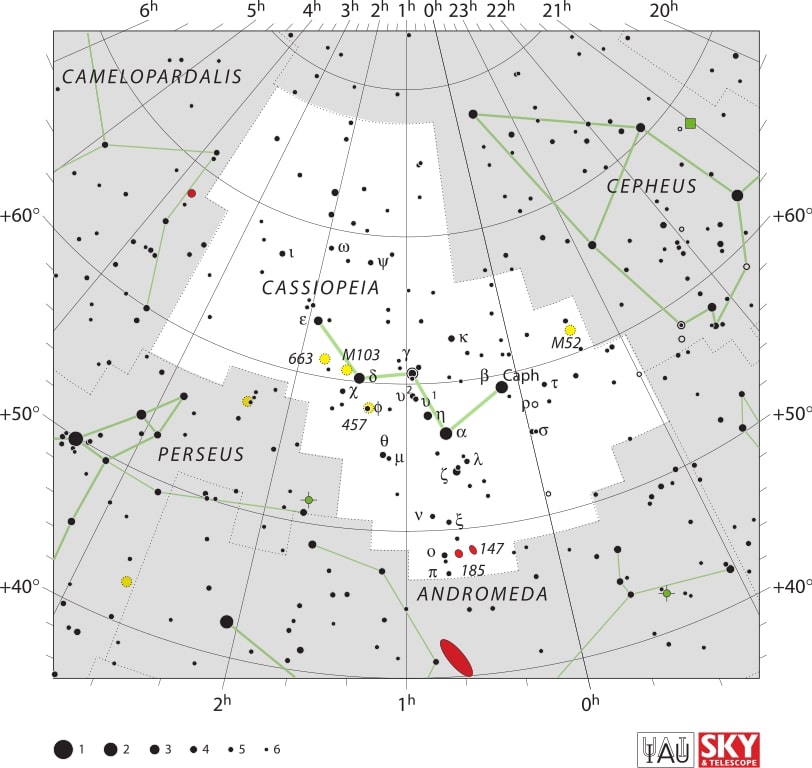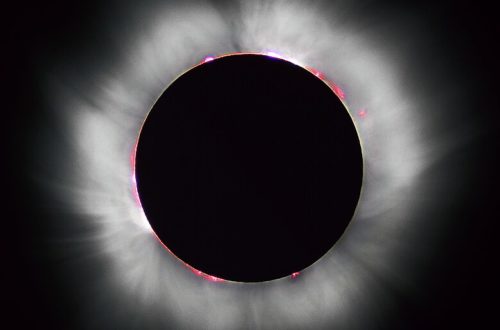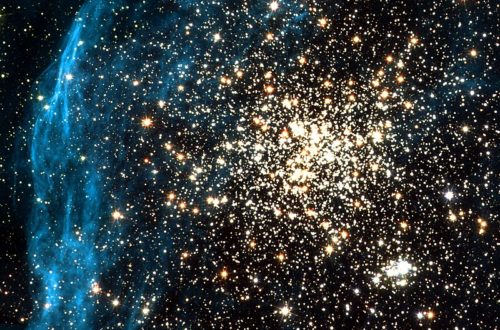NGC 281: The Stunning Pacman Nebula

NGC 281, also known as the Pacman Nebula, is a breathtakingly beautiful astronomical wonder. This emission nebula, located in the constellation of Cassiopeia, gets its nickname from its resemblance to the iconic video game character.
In this article, we will take a closer look at this stunning phenomenon and explore its fascinating features.
Where Is NGC 281?
The Pacman Nebula, is a stunning celestial object located in the constellation of Cassiopeia. Its unique and captivating appearance has made it a popular target for both amateur and professional astronomers.
Its distance from Earth is estimated to be around 9,500 light-years in the Perseus Spiral Arm of our Milky Way galaxy, and it spans an area of about 96 light-years.

Examining its Uniqueness and Beauty
One of the most striking features of this emission nebula and H II region is its uniqueness and beauty. NGC 281 is shaped like a pacman, with a darker region that appears as the mouth of the character. The nebula is also surrounded by a complex network of filaments and gas clouds, which are illuminated by the starlight. All of these factors make this nebula a truly unique and beautiful object in the night sky, and one that is well worth studying and admiring.
Brief History of the Discovery of NGC 281
NGC 281 was first discovered by American astronomer Edward Emerson Barnard in 1883. Barnard was known for his extensive work in discovering and studying celestial objects, and this nebula was just one of his many achievements. Since its discovery, the nebula has continued to intrigue astronomers and it has been the subject of numerous studies and observations using advanced telescopes and imaging techniques.
Other Designations for the Pacman Nebula
Aside from NGC 281, this nebula is also known as IC 11 in the Index Catalogue. The Pacman Nebula along with the open cluster IC 1590 and several Bok globules is also designated collectively as Sharpless 184 (or Sh2-184).
Conclusion
The Pacman Nebula is truly a celestial wonder that never fails to astound astronomers and stargazers alike. Its unique shape and stunning beauty make it a popular target for observation and study.
NGC 281 is a testament to the wonders of space and the endless possibilities for discovery that lie beyond our planet. As we continue to study and learn more about this incredible celestial object, we can only imagine what other mysteries and treasures await us in the vast expanse of the cosmos.
Would you like to receive similar articles by email?





